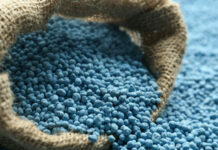
GLENCORE said on Wednesday it was considering moving its primary listing from London, possibly to the United States although it was giving mind to other jurisdictions.
Responding to questions following the group’s full year results presentation, Glencore CEO Gary Nagle said the US was “the leading candidate”, although he added that even with its UK listing, about 50% of the group’s share register was domiciled in the US.
“What’s moved between we when sat here before and being sat here now is that we are now actively engaged with experts and are actively considering it,” said Nagle. “We should always be alive as to whether we are traded on the right exchange.”
“The leading candidate would be the US, but we are not exlcuding another exchange. We are seeing some of the valuation multiples and the money that is available.” He could give no guidance on timing.
The Swiss-headquartered miner and marketing firm reported a $1.63bn attributable loss for its 2024 financial year ended December 31 owing to non-recurring items including $2.3bn in impairments.
Glencore’s South African coal operations were written down for $611m due to lower prices and in-country logistic constraints. Full year Ebitda fell 16% year-on-year to $14.4bn which the group said was due in part to lower thermal coal prices.
Adjusted Ebitda from thermal coal declined 54% to $3.2bn and copper was 5% lower. But the additional volumes of steemaking coal (by dint of the Elk Valley Resources acquisition) added $1.7bn in Ebitda, an increase of 81% year-on-year.
Commenting on the coal market, Glencore said 22% and 13% lower average prices for exports from Australia (Newcastle) and South Africa respectively represented a normalisation of the energy markets following disruptions between 2022 and 2023.
The upshot for shareholder returns is that Glencore declared a $0.10 per share ($1.2bn) base distribution and a $1bn top-up payout, to be executed by way of a buy-back, to be completed by August.
The market didn’t like what is saw. Shares in Glencore were nearly 6.5% lower in mid-morning trade in Johannesburg. Shares in BHP were 0.7% lower while Rio Tinto, which also reports today, was 1% higher on the Australian Securities Exchange.
Buy-backs vs build vs M&A
Glencore was said to have held talks with Rio Tinto in October about a combination of the two businesses. Asked about merger and acquisition plans, Nagle said there was “not much to buy for good value”.
Instead he viewed share buy-backs as a third alternative to either building new mines or M&A activity. “It is the best M&A you can do. We are front-running our share re-rate, which is coming; it is like taking the company private by stealth,” he said.
Glencore had bought back 1.2 billion of its shares over the last three-and-a-half years, spending about $10bn doing so.
Nagle also raised the prospect of launching a new share buy-back programme after the firm’s interim results in August, when the current $1bn programme expires.
Analysts expected Glencore to resume its former policy of distributing excess cash (provided net debt is below $10bn) – after abandoning its spin-out of its Elk Valley coal assets which were bought for $7bn from Canada’s Teck Corp. last year.
As of December 31, however, net debt was $11.2bn compared to $4.9bn at the corresponding time of the previous financial year.
The share buy-back will be funded with $1bn Glencore expects to receive for the sale of its 50% stake in agribusiness Viterra to Bunge as per a 2023 announcement.
Copper growth
Nagle described the 12 months under review as strong operationally. Funds from operations increased 11% year-on-year to $10.5bn. Including steelmaking coal production from the Elk Valley acquisition, Glencore reported 4% year-on-year growth in copper equivalent volumes.
Nagle said the group was at “an inflection point” taking into account the scale of restructuring of non-core assets over the last few years.
As part of this outlook, the group had identified one million tons of potential annual copper growth from “shovel-worthy” projects at a weighted average capital intensity of about $15 to 20,000/t of copper equivalent capex.
“Subject to supportive copper market and specific country and other investment considerations, we intend to progress the most advanced “shovel worthy” projects towards feasibility conclusion and a final investment decision,” Nagle said.
“While there is increased uncertainty around the impacts of geopolitics in the shorter-term, we remain of the view that, in certain commodities, the scale and pace of global mine project development will struggle to meet demand for the materials needed in the future.”









